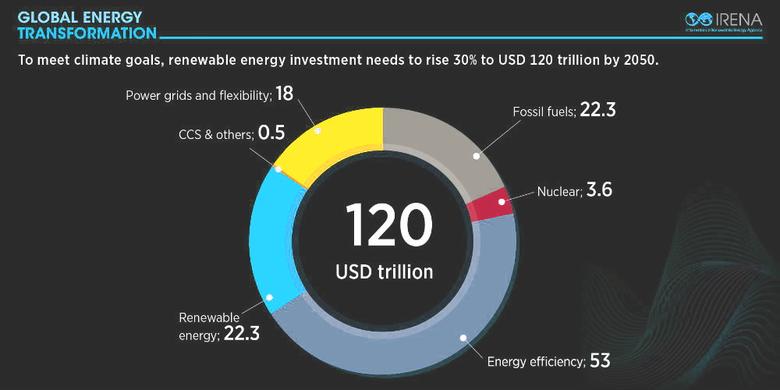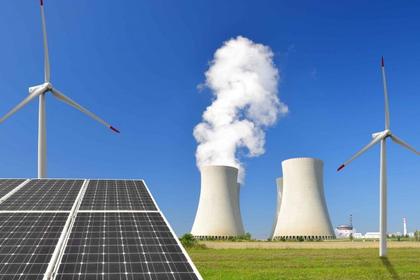GLOBAL WARMING: $50 TLN

НОВАТЭК - Москва, 24 июля 2019 года. ПAO «НОВАТЭК» сегодня опубликовало консолидированную промежуточную сокращенную финансовую отчетность по состоянию на и за три и шесть месяцев, закончившихся 30 июня 2019 г., подготовленную в соответствии с Международными стандартами финансовой отчетности (МСФО).
Основные финансовые показатели деятельности по МСФО
(в миллионах российских рублей, если не указано иное)
|
II кв.
2019 г.
|
II кв.
2018 г.
|
|
1П
2019 г.
|
1П
2018 г.
|
|
215 789
|
194 818
|
Выручка от реализации нефти и газа
|
446 973
|
373 303
|
|
2 724
|
1 004
|
Прочая выручка
|
5 646
|
1 922
|
|
218 513
|
195 822
|
Итого выручка от реализации
|
452 619
|
375 225
|
|
(157 507)
|
(135 606)
|
Операционные расходы
|
(332 647)
|
(266 643)
|
|
-
|
-
|
Прибыль от выбытия долей владения в дочерних
обществах и совместных предприятиях, нетто
|
308 578
|
1 645
|
|
(247)
|
(621)
|
Прочие операционные
прибыли (убытки), нетто
|
(1 161)
|
(519)
|
|
60 759
|
59 595
|
Прибыль от операционной деятельности нормализованная*
|
118 811
|
108 063
|
|
69 193
|
68 958
|
EBITDA дочерних обществнормализованная*
|
134 917
|
125 379
|
|
115 835
|
101 339
|
EBITDA с учетом доли в EBITDA
совместных предприятий нормализованная*
|
233 777
|
177 645
|
|
(277)
|
7 380
|
Доходы (расходы) от финансовой деятельности
|
(6 298)
|
12 782
|
|
23 282
|
(18 215)
|
Доля в прибыли (убытке) совместных
предприятий за вычетом налога на прибыль
|
94 255
|
(17 052)
|
|
83 764
|
48 760
|
Прибыль до налога на прибыль
|
515 346
|
105 438
|
|
69 175
|
32 041
|
Прибыль, относящаяся к
акционерам ПАО «НОВАТЭК»
|
450 971
|
75 162
|
|
64 296
|
54 289
|
Прибыль, относящаяся к акционерам
ПАО «НОВАТЭК», нормализованная**
|
130 026
|
101 199
|
|
21,35
|
18,01
|
Прибыль на акцию нормализованная** (в руб.)
|
43,17
|
33,57
|
|
31 203
|
22 052
|
Денежные средства, использованные
на оплату капитальных вложений
|
73 679
|
31 764
|
* Без учета эффекта от выбытия долей владения в дочерних обществах и совместных предприятиях.
** Без учета эффектов от выбытия долей владения в дочерних обществах исовместных предприятиях и от курсовых разниц.
Выручка от реализации и EBITDA
Во втором квартале 2019 года наша выручка от реализации составила 218,5 млрд руб., а нормализованный показатель EBITDA с учетом доли в EBITDA совместных предприятий составил 115,8 млрд руб., что представляет собой увеличение на 11,6% и 14,3% соответственно по сравнению с аналогичным периодом 2018 года. За шесть месяцев, закончившихся 30 июня 2019 г., наша выручка от реализации и нормализованный показатель EBITDA с учетом доли в EBITDA совместных предприятий составили 452,6 млрд руб. и 233,8 млрд руб., увеличившись на 20,6% и 31,6% соответственно по сравнению с отчетным периодом прошлого года.
Рост выручки и нормализованного показателя EBITDA в основном связан с запуском производства СПГ на второй и третьей очередях завода «Ямала СПГ» во втором полугодии 2018 года.
Прибыль, относящаяся к акционерам ПАО «НОВАТЭК»
Прибыль, относящаяся к акционерам ПАО «НОВАТЭК», выросла до 69,2 млрд руб. (22,97 руб. на акцию), или на 115,9%, во втором квартале 2019 года и до 451,0 млрд руб. (149,73 руб. на акцию), или в шесть раз, в первом полугодии 2019 года по сравнению с аналогичными периодами 2018 года. На прибыль Группы значительное влияние оказало признание в марте 2019 года прибыли от продажи 10%-ной доли участия в проекте «Арктик СПГ 2» в размере 308,6 млрд руб., а также признание в обоих отчетных периодах неденежных курсовых разниц по займам Группы и совместных предприятий, номинированным в иностранной валюте.
Без учета эффекта от выбытия долей владения в дочерних обществах и совместных предприятиях и эффекта от курсовых разниц, нормализованная прибыль, относящаяся к акционерам ПАО «НОВАТЭК», составила 64,3 млрд руб. (21,35 руб. на акцию) во втором квартале 2019 года и 130,0 млрд руб. (43,17 руб. на акцию) в первом полугодии 2019 года, увеличившись на 18,4% и 28,5% соответственно по сравнению с аналогичными периодами 2018 года.
Капитальные вложения
Денежные средства, использованные на оплату капитальных вложений, увеличились до 31,2 млрд руб., или на 41,5%, во втором квартале 2019 года и до 73,7 млрд руб., или на 132,0%, в первом полугодии 2019 года по сравнению с аналогичными периодами прошлого года. Значительная часть наших инвестиций в основные средства была направлена на развитие СПГ-проектов (проекта «Арктик СПГ 2» до марта 2019 года и проекта по созданию центра по строительству крупнотоннажных морских сооружений в Мурманской области), освоение Северо-Русского месторождения и разработку нефтяных залежей Восточно-Таркосалинского и Ярудейского месторождений.
Объем добычи и покупки углеводородов
|
II кв.
2019 г.
|
II кв.
2018 г.
|
|
1П
2019 г.
|
1П
2018 г.
|
|
149,0
|
131,8
|
Совокупная добыча углеводородов,
млн баррелей нефтяного эквивалента (млн бнэ)
|
296,1
|
264,3
|
|
1,64
|
1,45
|
Совокупная добыча (млн бнэ в сутки)
|
1,64
|
1,46
|
|
18 910
|
16 418
|
Добыча природного газа с учетом доли в
добыче совместных предприятий (млн куб. м)
|
37 570
|
32 926
|
|
9 935
|
10 562
|
Добыча природного газа в дочерних обществах
|
20 034
|
20 925
|
|
7 909
|
4 420
|
Покупка природного газа
у совместных предприятий
|
16 830
|
12 007
|
|
1 971
|
1 708
|
Прочие покупки природного газа
|
4 190
|
3 437
|
|
19 815
|
16 690
|
Итого добыча природного газа дочерних обществ и покупка (млн куб. м)
|
41 054
|
36 369
|
|
3 035
|
2 928
|
Добыча жидких углеводородов с учетом доли в добыче совместных предприятий (тыс. тонн)
|
6 022
|
5 864
|
|
1 607
|
1 650
|
Добыча жидких углеводородов
в дочерних обществах
|
3 207
|
3 278
|
|
2 366
|
2 322
|
Покупка жидких углеводородов
у совместных предприятий
|
4 679
|
4 622
|
|
51
|
56
|
Прочие покупки жидких углеводородов
|
107
|
100
|
|
4 024
|
4 028
|
Итого добыча жидких углеводородов дочерних обществ и покупка (тыс. тонн)
|
7 993
|
8 000
|
Объем добычи природного газа с учетом нашей доли в добыче совместных предприятий во втором квартале и в первом полугодии 2019 года вырос на 15,2% и 14,1% соответственно, а объем добычи жидких углеводородов увеличился на 3,7% и 2,7% соответственно по сравнению с аналогичными периодами 2018 года. Основным фактором, оказавшим положительное влияние на рост добычи, стал запуск производства СПГ на второй и третьей очередях завода «Ямала СПГ» во второй половине 2018 года.
Объем реализации углеводородов
|
II кв.
2019 г.
|
II кв.
2018 г.
|
|
1П
2019 г.
|
1П
2018 г.
|
|
18 764
|
15 149
|
Природный газ (млн куб. м)
|
40 959
|
35 412
|
|
|
|
в том числе:
|
|
|
|
15 114
|
14 496
|
Реализация в Российской Федерации
|
33 888
|
33 801
|
|
3 650
|
653
|
Реализация на международных рынках
|
7 071
|
1 611
|
|
4 130
|
4 273
|
Жидкие углеводороды (тыс. тонн)
|
8 106
|
8 050
|
|
|
|
в том числе:
|
|
|
|
1 841
|
2 028
|
Продукты переработки стабильного
газового конденсата
|
3 638
|
3 594
|
|
1 214
|
1 148
|
Сырая нефть
|
2 341
|
2 271
|
|
674
|
658
|
Сжиженный углеводородный газ
|
1 351
|
1 307
|
|
396
|
436
|
Стабильный газовый конденсат
|
768
|
872
|
|
5
|
3
|
Прочие нефтепродукты
|
8
|
6
|
Во втором квартале и в первом полугодии 2019 года объем реализации природного газа составил 18,8 млрд и 41,0 млрд куб. м, увеличившись на 23,9% и 15,7% соответственно по сравнению с аналогичными периодами 2018 года, в результате роста объемов реализации СПГ, приобретаемого у наших совместных предприятий OАO «Ямал СПГ» и OOO «Криогаз-Высоцк». По состоянию на 30 июня 2019 г. наши остатки природного газа составили 1,4 млрд куб. м по сравнению с 1,3 млрд куб. м на 30 июня 2018 г. и в основном относились к остаткам природного газа в подземных хранилищах. Остатки природного газа формируются в зависимости от потребности Группы в отборе природного газа для реализации в последующих периодах.
Во втором квартале 2019 года объем реализации жидких углеводородов уменьшился на 3,3% до 4,1 млн тонн по сравнению с 4,3 млн тонн в аналогичном периоде прошлого года главным образом за счет изменения остатков. При этом объем реализации жидких углеводородов в первом полугодии 2019 года по сравнению с первым полугодием 2018 года незначительно увеличился на 0,7%. По состоянию на 30 июня 2019 г. совокупный объем жидких углеводородов, отраженный как «Остатки готовой продукции и товары в пути», составил 852 тыс. тонн по сравнению с 806 тыс. тонн по состоянию на 30 июня 2018 г. Остатки наших жидких углеводородов изменяются от периода к периоду и, как правило, реализуются в следующем отчетном периоде.
Выборочные статьи консолидированного отчета
о финансовом положении (в миллионах рублей)
|
|
30.06.2019 г.
|
31.12.2018 г.
|
|
Активы
|
|
|
|
Долгосрочные активы
|
1 229 888
|
923 050
|
|
в т.ч. основные средства
|
455 605
|
408 201
|
|
в т.ч. инвестиции в совместные предприятия
|
451 844
|
244 500
|
|
в т.ч. долгосрочные займы выданные
и дебиторская задолженность
|
256 555
|
232 922
|
|
Текущие активы
|
381 807
|
293 320
|
|
Итого активы
|
1 611 695
|
1 216 370
|
|
ОБЯЗАТЕЛЬСТВА И КАПИТАЛ
|
|
|
|
Долгосрочные обязательства
|
219 905
|
222 752
|
|
в т.ч. долгосрочные заемные средства
|
144 777
|
170 043
|
|
Текущие обязательства
|
109 675
|
107 023
|
|
Итого обязательства
|
329 580
|
329 775
|
|
Итого капитал, относящийся
к акционерам ПАО «НОВАТЭК»
|
1 264 340
|
868 254
|
|
Доля неконтролирующих
акционеров дочерних обществ
|
17 775
|
18 341
|
|
Итого капитал
|
1 282 115
|
886 595
|
|
Итого обязательства и капитал
|
1 611 695
|
1 216 370
|
-----
GLOBAL WARMING: $50 TLN

BLOOMBERG - The world needs to spend $50 trillion on five areas of technology by 2050 to slash emissions and meet the Paris Agreement's goal of halting global warming, Morgan Stanley analysts wrote in a report.
To reduce net emissions of carbon to zero, the world would have to eradicate the equivalent of 53.5 billion metric tons of carbon dioxide a year, according to the report, which identified renewable energy, electric vehicles, hydrogen, carbon capture and storage, and biofuels as the key technologies that could help meet the target.
Carbon emissions from fossil fuels hit a record last year, but estimates vary of how much it would cost to meet the Paris target of keeping the global temperature rise to within 2 degrees. The International Renewable Energy Agency says $750 billion a year is needed in renewables over a decade. United Nations scientists say $300 billion spent on reclaiming degraded land could offset emissions to buy time to deploy zero-carbon technologies.
Here are Morgan Stanley's estimates for the five key technology areas and some of the companies leading the drive.
Renewables
Renewable power generation will require $14 trillion by 2050, including investments in energy storage.
Renewables would need to deliver about 80 percent of global power by then, up from 37 percent today, meaning an additional 11,000 gigawatts of capacity, excluding hydro-power.
Solar energy's rapidly falling cost will make it the fastest-growing renewable technology over the coming decade with a 13 percent compound annual growth rate.
Stocks that could benefit include: CGN New Energy Holdings Co., China Resources Power Holdings Co. and China Suntien Green Energy Co.
Electric vehicles
With passenger cars currently pumping out about 7 percent of greenhouse gas emissions, some $11 trillion will be needed to build factories, expand power capacity and develop the batteries and infrastructure needed to switch to electric vehicles.
With increased investment, annual EV sales could grow from 1.3 million units in 2018 to 23.2 million in 2030, lifting the total number of electric vehicles to 113 million by 2030 and 924 million by 2050.
Some of the companies to watch: Beijing Easpring Material Technology Co., Rohm Co. and Panasonic Corp.
Carbon capture and storage
Almost $2.5 trillion would be needed for technologies that capture carbon and store it.
While it currently costs about $700 million to capture a million tons of carbon a year, the cost of building CCS plants is expected to drop 30 percent by 2050.
With more than 200,000 megawatts of new coal-fired generation capacity under construction, CCS is the only option to offset the emissions of these plants, Morgan Stanley says.
The bank's top picks include Air Liquide SA and Bloom Energy Corp.
Hydrogen
About $5.4 trillion is needed for electrolyzers to make the gas, which can help provide clean fuel for power generation, industrial processes, vehicles and heating.
In addition, $13 trillion would be required to increase renewable energy capacity to power the plants.
Another $1 trillion would be needed for storage, with additional investment for transportation and distribution.
Leading players include: Johnson Matthey PLC and Air Liquide SA.
Biofuels
Almost $2.7 trillion should go into biofuels like ethanol, which are currently mixed with petroleum products but will spread eventually to areas such as aviation.
About 4 percent of global transportation fuel will be biofuel in 2030.
Ethanol, the most-used biofuel at the moment will grow at about 3 percent a year, while a type of biodiesel called hydrotreated vegetable oil will achieve must faster growth, quadrupling production by 2030.
-----
Earlier:

2019, October, 25, 08:45:00
RENEWABLES WILL UP BY 50%
the world’s total renewable-based power capacity will grow by 50% between 2019 and 2024. This increase of 1,200 gigawatts – equivalent to the current total power capacity of the United States

2019, October, 23, 11:20:00
RENEWABLE ENERGY BENEFITS
As the IRENA Director-General Francesco La Camera said recently at the International Energy Forum in Riyadh, Saudi Arabia: “It is perfectly possible to generate sufficient cheap, reliable energy from renewable sources. Not only is it possible, but it is also our best option, as it would bring higher socio-economic benefits than business as usual, and it would allow us to effectively address climate change.”

2019, October, 9, 13:15:00
CLIMATE, ENERGY CHANGES
Global efforts to tackle climate change are futile as long as opposition to nuclear power persists, delegates heard at the opening session of the International Atomic Energy Agency's International Conference on Climate Change and the Role of Nuclear Power. It is the Vienna-based agency's first conference on this topic.
All Publications »
Tags:
CLIMATE,
WARMING,
ENERGY,
RENEWABLE










